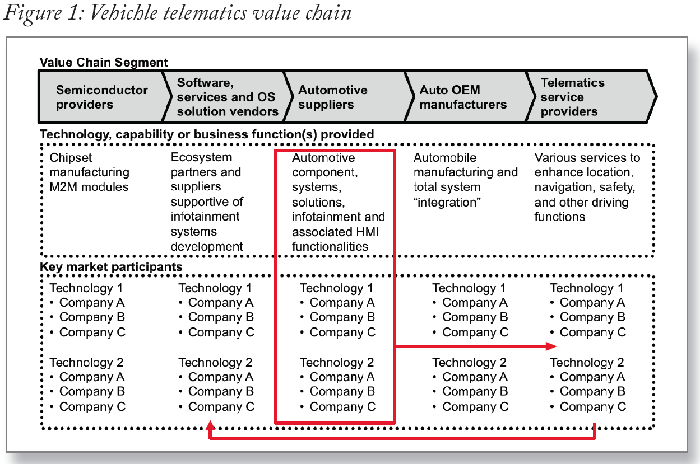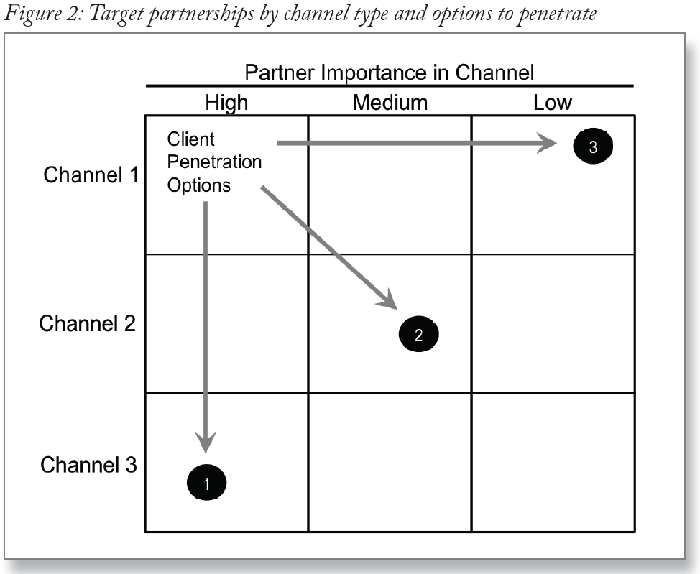Termed “vehicle telematics”, the automotive world is actively adopting advanced software, connectivity, and user interfaces to drive a new era in the automotive industry.
However, the nascent stage of the telematics market’s development has led to a variegated set of participants vying for emerging profit pools. A leading participant in a segment of the internet of things industry, but peripheral to the vehicle telematics market, engaged Red Chalk Group to distill a viable, long-term strategic partnership roadmap given the market’s evolution and the likely beneficiaries.
Approach
A baseline understanding of the emerging value chain and traditional and evolving roles of each functional segment was critical in forming the foundation for predicting future business models, consolidation, and technology scenarios.

We then conducted a “diagnostic” and utilized a primary research “lens” to probe the ecosystem for key moves, top themes, and long-term “competitive equilibrium”.

After the diagnostic, and a resulting long-term view of the market, Red Chalk Group offered various scenarios as to the evolution of telematics.
Based on a conviction thesis that the market would evolve in a specific manner, a resulting set of targets across channels of influence was formed with an associated go-to-market framework for the client and 3 discrete options to penetrate the market.
Additionally, business models with ease of execution and robust economics were analyzed based on the proposed partnership framework. The framework was placed in context of a broader roadmap that integrated knowledge on the likely beneficiaries, future value chain positions, and the client’s telematics technology offering and associated value proposition.
Client Impact
Our strategic recommendations offered the C-Suite with a rich understanding of the long-term opportunity and the relevant partnership model that would yield success in a highly dynamic technology market. Three channels and four high priority partnerships were offered as focus areas for management’s business development efforts.




